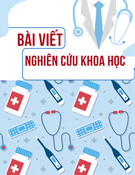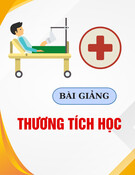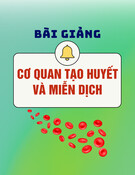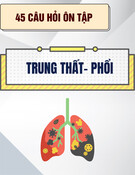
44
Journal of Medicine and Pharmacy, Volume 12, No.07/2022
Heath risk behaviours among adolescents in central of Vietnam: a
cross sectional study
Ton Nu Minh Duc1, Tran Thi Hang1, Ha Van Anh Bao1,
Ho Thi Thuy Trang1, Mai Ba Hai1, Tran Thi Nguyet1, Vo Thi Diem Binh1,
Hoang Thi Viet Ha1, Nguyen Vu Quoc Huy1, Nguyen Thi Anh Phuong1*
(1) University of Medicine and Pharamcy, Hue University
Background: Adolescence is vulnerable subjects and faces many risks that greatly impact their health
and development in the future, but adolescents are not really getting the proper care from the health care
system. This study aimed to examine the prevalence of health risk behaviours among adolescents in Thua
Thien Hue Province, Vietnam, and to determine related factors to adolescents’ health risk behaviours.
Materials and Methods: A descriptive cross-sectional study was conducted on 934 adolescents in Thua
Thien Hue province, with a multi-stage sampling method. The Youth Risk Behaviour Survey of the Center
for Disease Control and Prevention was used for data collection in this study. The SPSS 20.0 software was
used to analyse data. Results: The proportion of overweight-obesity adolescents accounted for 14.6%. The
prevalence of adolescent bullying was 14.0%, the higher the adolescent high, the lower the risk of bullying
(OR=0.981, p=0.03). The proportion of smoking was low (2.8%), while the alcohol use rate accounted for
10.0%. Adolescents in high school have a higher risk of smoking and alcohol use than those in secondary
school. The proportion of adolescents who attempted suicide was slightly high (16.0%). Adolescents who felt
lonely, whose parents did not know what the adolescent did in their free time, and does not respect them
were several factors that increase suicide intention. Conclusions: School adolescent violence, overweight-
obese status, alcohol use, smoking, and suicide intention are health problems occurring among adolescents
in Thua Thien Hue. Besides, the feeling of loneliness increases the risk of suicide intention. Adolescents need
to receive proper attention from their parents, as well as the healthcare system.
Keywords: Adolescent; health-risk behaviours; Thua Thien Hue province.
Corresponding author: Nguyen Thi Anh Phuong, email: ntaphuong@huemed-univ.edu.vn
Recieved: 23/9/2022; Accepted: 10/11/2022; Published: 30/12/2022
DOI: 10.34071/jmp.2022.7.6
1. BACKGROUND
Health risk behaviours during adolescence
could contribute to the leading cause of death
and disability in adults. Remarkable health
risk behaviours compose tobacco use, sexual
behaviours, unintentional injuries and violence,
mental health, alcohol use, physical inactivity,
overweight and obesity, other drug use, etc.
These behaviours are usually established during
childhood, and are preventable. In addition, to
causing serious health problems, these behaviours
also contribute to educational and social problems.
Nowadays, 65% of the world’s population
live in high-income and most middle-income
countries where overweight and obesity kill more
people than underweight. According to the Global
Burden of Disease study 4.7 million people died
prematurely in 2017 as a result of obesity [1].
Besides, physical inactivity has been rated as high
as the 4th leading risk factor for global mortality,
causing an estimated 3.2 million deaths globally
[2].
Noticeably, an alarming proportion of suicide
attempts among adolescents was recorded in
low- and middle-income countries, with 79% and
suicide is the second leading cause of death among
adolescents and young adults (aged 15–29 years)
worldwide [3].
The adolescents comprising one-sixth of the
world’s population, a number of their health
behaviours at this time could seriously impact
on the health and development in the future. In
Vietnam, the adolescents aged 10 to 19 years
old make up 14.3% of Vietnam’s population [4],
they have to face a variety of health risks, but
adolescents are not really getting the proper
care of the health system. In addition, identifying
risky health behaviours will provide essential and
useful information that aim to orient and develop
appropriate and effective interventive programs
for the adolescent. With practical support and
intervention, the quality of adolescent’s life will
be ensured and enhanced. Therefore, we have
conducted the research: ‘Heath risk behaviours
among adolescents in central of Vietnam: A cross
sectional study’ with objectives:






























